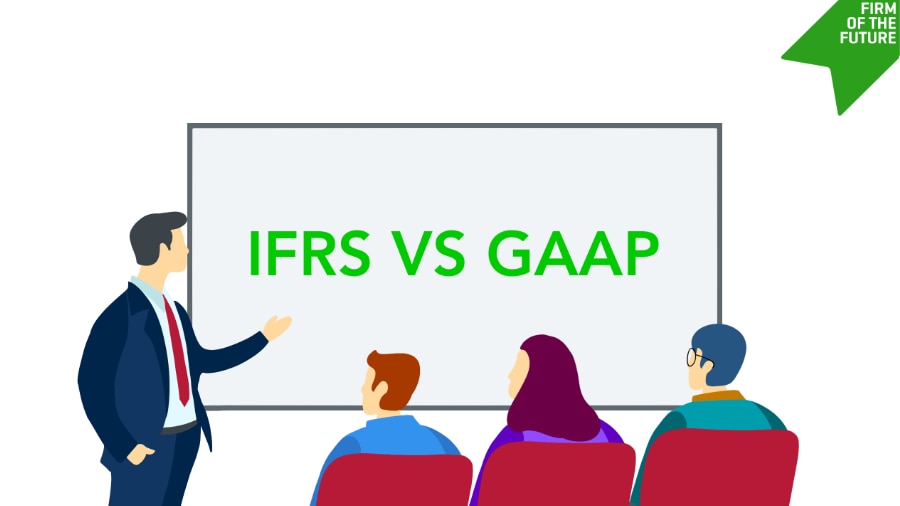In recent years, the subscription-based industry has seen a huge rise in popularity, showing how the way we buy products and services has changed. Experts predict that the global subscription economy will hit $1.5 trillion by 2025, a significant leap from $650 billion in 2020.
Subscription-based businesses such as Amazon Prime, HubSpot, and others are booming, and the accounting professionals who work with them know they all have a common problem: accurate subscription bookkeeping, which includes GAAP-compliant (Generally Accepted Accounting Principles) revenue recognition. Unlike businesses that recognize revenue as soon as they sell or deliver a product, subscription businesses must recognize revenue over the period the service is provided. This becomes even more complicated with frequent contract changes and the complexities of subscription billing.
We’ll focus on five major challenges subscription businesses face when handling revenue recognition, and explore a solution that has the potential to put all of them to rest. But first, to understand where these challenges come from, let’s look into the accounting standards regulating revenue recognition.
GAAP, ASC 606, and IFRS 15: Why compliance matters and where the challenges come from
In the United States, public businesses follow GAAP, one of which is revenue recognition. Accounting Standards Codification (ASC) 606 provides the framework for recognizing revenue from customer contracts with the five-step model, which includes the identification of contracts and performance obligations, determining transaction pricing, allocation of the price, and timely revenue recognition. Basically, ASC 606 says you should recognize revenue when you’ve met your performance obligations in a customer contract—not when you get paid.
Subscription businesses need to recognize revenue when it’s earned, rather than when the payment is received, following regulatory standards that vary depending on the location and type of business.
Internationally, many businesses also adhere to International Financial Reporting Standards (IFRS). IFRS guidelines make sure revenue is recognized when you’ve met the conditions of performance, collectability, and measurability in customer contracts.
Keeping up with these regulations can be challenging, especially for businesses with lots of subscriptions. It often means doing some complex calculations to make sure you’re helping your clients recognize revenue correctly throughout the subscription contract. This is where most of the subscription revenue recognition challenges stem from. Let’s break down the major ones.
1. Keeping up with subscription changes
Subscriptions can be very unpredictable, with frequent changes that can mess with the revenue recognition schedule. These changes—including upgrades, downgrades, renewals, cancellations, discounts, and refunds—get more complicated to handle as the number of subscriptions grows. Each one of them means accountants have to adjust the revenue recognition schedule in a certain way. For example, renewals extend the revenue timeline, while cancellations mean they have to re-evaluate the remaining month of the contract.
If you fail to reflect these changes in QuickBooks Online, for example, small errors can add up over time, leading to significant discrepancies in revenue reports.
2. Aligning the timing of revenue recognition
Another big challenge is handling upfront payments for services that are delivered over a long period. With accrual accounting, revenue is recognized only when the service or product is actually delivered to the customer.
When a company gets payments for products or services that haven’t been delivered, it can't count the money as revenue right away. Instead, it records these payments as deferred revenue on the balance sheet, which represents cash received before fulfilling the contract obligations.
Contracts dictate how services are provided, so revenue should be allocated according to the contract agreement. For example, an annual subscription of $120 can be recognized in equal amounts of $10 each month throughout the billing period of one year. This way, businesses should defer revenue until they fully meet their obligations.
As an accountant, your job is to prevent any misalignment with the contract that could disrupt financial statements and lead to compliance issues.
3. Recognizing multi-currency payments correctly
When a business sells in several countries, recognizing multi-currency payments becomes an additional challenge, because revenue must ultimately be recognized in their home currency. Customers might pay in one currency (the presentment currency), while the business receives payments in another (the settlement currency).
If a transaction's presentment currency matches the business' settlement currency, the process is straightforward and the payment can be recognized directly. However, when these currencies differ, the transaction amount must be converted to the default settlement currency to ensure everything is correctly accounted for.
Properly recognizing multi-currency subscriptions is a challenge due to constant conversion rate changes and the need for reporting in a single currency.
4. Understanding tax liability
When it comes to taxes, the requirements are clear: Taxes cannot be recognized as revenue and must be considered a liability. And it’s important to differentiate between tax-exclusive and tax-inclusive rates.
- Tax exclusive: The tax is calculated at the point of the final transaction. For example, an invoice with a sales item for $100 and an exclusive tax of $10 means $100 is recognizable revenue and $10 is tax liability. The invoice and accounts receivable totals are both $110, making revenue recognition straightforward.
- Tax inclusive: The tax amount is included in the final price, complicating things. If a customer starts a monthly subscription with a sales item for $100 with an inclusive tax rate of 10%, the total due amount on the invoice is $100. Here, you need to split the revenue and taxes correctly: $90 is recognizable revenue and $10 is the tax liability.
Inclusive prices pose an additional challenge for revenue recognition processes.
5. Doing revenue recognition manually
As subscription businesses grow the number of subscriptions and expand their offerings, managing revenue recognition becomes increasingly complex. Many accountants still do it manually and some may use Excel. That might work for a small number of subscriptions, but things get messy with high-volume clients. You have to track more subscription changes and account for customer usage or payments over many accounting periods. It quickly gets out of control.
Manual revenue recognition inevitably leads to more mistakes, takes longer to fix errors, gives you less visibility and real-time reporting, and makes revenue forecasting less accurate. On top of it all, this time-consuming and error-prone process can cause serious compliance issues.
Five challenges, one solution
So how can you tackle these challenges? Automate your clients’ revenue recognition processes with integrated software to drive growth by obtaining more efficient and accurate data records.
Integrated revenue recognition software, including QuickBooks Online Advanced, comes with a built-in revenue recognition module. This allows you to automatically track and enter deferred revenue into your books, giving you better reporting, insights, and decision-making.
And when you need to bridge the gap between QuickBooks Online with your client’s payment platforms, you might consider using Synder RevRec. Synder automatically detects subscription changes in Stripe and integrates them seamlessly into QuickBooks Online, ensuring the revenue recognition process stays accurate and uninterrupted.
Automate your process
Recognizing revenue for subscription-based businesses can be a real headache, with all the frequent adjustments, upfront payments, tax liabilities, and manual processes. Managing an expanding customer base and a growing amount of subscriptions will become harder and harder, so switching from manual to automated systems is totally worth it.
With the right automation tools and proper controls, you can easily manage these issues, follow all revenue recognition standards and regulations, and help their clients grow and succeed in a competitive market.
Editor’s note: Synder is an app that integrates with QuickBooks Online. Find it in the QuickBooks App Store.



